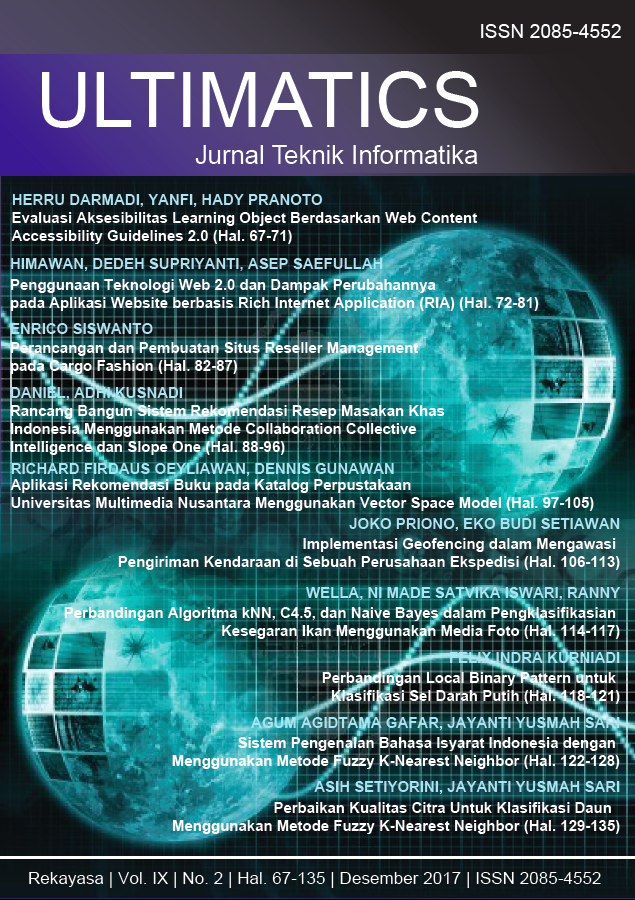Evaluasi Aksesibilitas Learning Object Berdasarkan Web Content Accessibility Guidelines 2.0
DOI:
https://doi.org/10.31937/ti.v9i2.602Abstract
Learning Object (LO) is a representation of interactive content that are used to enrich e-learning activities. The goals of this case study were to evaluate accessibility and compatibility factors from learning objects that were produced by using BINUS E-learning Authoring Tool. Data were compiled by using experiment to 30 learning objects by using stratified random sampling from seven faculties in undergraduate program. Data were analyzed using accessibility and compatibility tests based on Web Content Accessibility Guidelines 2.0 Level A. Results of the analysis for accessibility and compatibility tests of Learning Objects was 90% better than average. The result shows that learning objects is fully compatible with major web browser. This paper also presents five accessibility problems found during the test and provide recommendation to overcome the related problems. It can be concluded that the learning objects that were produced using BINUS E-learning Authoring Tool have a high compatibility, with minor accessibility problems. Learning objects with a good accessibility and compatibility will be beneficial to all learner with or without disabilities during their learning process.
Index Terms”accessibility, compatibility, HTML, learning object, WCAG2.0, web
Downloads
Downloads
Published
How to Cite
Issue
Section
License
Authors retain copyright and grant the journal right of first publication with the work simultaneously licensed under a Creative Commons Attribution-ShareAlike International License (CC-BY-SA 4.0) that allows others to share the work with an acknowledgement of the work's authorship and initial publication in this journal.
Authors are able to enter into separate, additional contractual arrangements for the non-exclusive distribution of the journal's published version of the work (e.g., post it to an institutional repository or publish it in a book), with an acknowledgement of its initial publication in this journal.
Copyright without Restrictions
The journal allows the author(s) to hold the copyright without restrictions and will retain publishing rights without restrictions.
The submitted papers are assumed to contain no proprietary material unprotected by patent or patent application; responsibility for technical content and for protection of proprietary material rests solely with the author(s) and their organizations and is not the responsibility of the ULTIMATICS or its Editorial Staff. The main (first/corresponding) author is responsible for ensuring that the article has been seen and approved by all the other authors. It is the responsibility of the author to obtain all necessary copyright release permissions for the use of any copyrighted materials in the manuscript prior to the submission.















